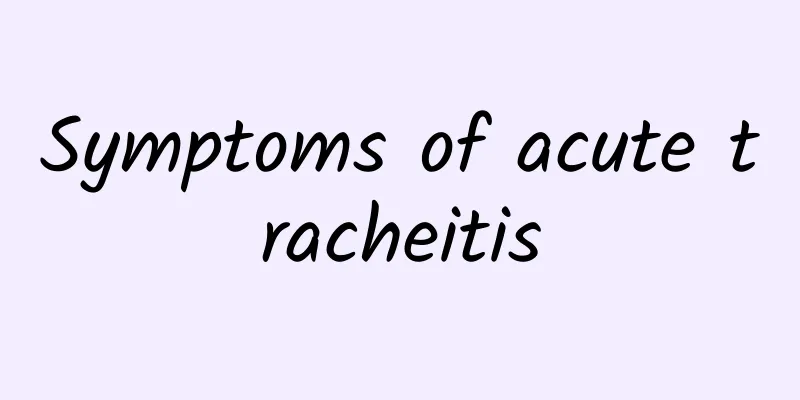Can bullae heal on their own? Timely treatment is still needed

|
Nowadays, people are very prone to bullae. If bullae do not show symptoms, no treatment is required. However, if symptoms appear, surgical treatment is required as it cannot heal itself. If surgical treatment is not performed in time, it will affect the function of the lungs and cause other lesions. 1. For more localized bullae , if the patient has no obvious symptoms, there is no need to rush to consider surgical treatment. Follow-up observation is recommended. In some patients, the bullae may disappear due to obstruction of small bronchioles. Asymptomatic bullae do not require treatment. For patients with chronic bronchitis or emphysema, treatment is mainly focused on the primary lesion. If secondary infection occurs, antibiotics should be used. The bullae that develop after pneumonia in children will usually disappear on their own after the pneumonia is cured. This type of bulla generally does not require surgical treatment. 2. For patients with large pulmonary bullae, which occupy 70% to 100% of the chest cavity on one side and have clinical symptoms but no other pulmonary lesions, surgical removal of the pulmonary bullae can re-expand the compressed lung tissue, increase the breathing area, eliminate intrapulmonary shunt, increase arterial oxygen partial pressure, reduce airway resistance, increase ventilation volume, and improve the patient's symptoms of dyspnea such as chest tightness and shortness of breath. 3. During the operation, as much healthy lung tissue as possible should be preserved, and efforts should be made to only perform bullae resection and suture, or wedge resection of local lung tissue, to avoid unnecessary loss of lung function. Spontaneous pneumothorax caused by ruptured bullae can be cured by non-surgical treatments such as thoracentesis and closed chest drainage, but recurrent spontaneous pneumothorax should be treated surgically. During the operation, the bullae are ligated or sutured, and 2% iodine can be used to apply to the chest cavity to make the pleura adhere and fix, thus preventing the recurrence of pneumothorax. The clinical symptoms of patients with hemothorax are sometimes very severe, often with chest pain and dyspnea, as well as a series of manifestations of internal bleeding. Clinically, the changes in the condition should be closely observed, and non-surgical measures such as blood transfusion and thoracentesis should be taken in a short period of time. When there is no obvious improvement in symptoms, thoracotomy should be performed decisively. At this time, there is often heavy active bleeding. Non-surgical treatment and observation for too long often delay the disease, and the prognosis is not as good as surgical hemostasis. 4. The principle of surgical treatment of bullae is to relieve the pressure of the bullae and preserve functional lung tissue as much as possible. Lung resection should not be performed lightly. Common surgical methods are as follows: (i) Bullectomy: If there is no other lesion in the lung tissue, simple bullectomy should be performed. If blisters are present at the same time, they can be ligated or sutured at their base with silk thread. (ii) Lobectomy: If the lung tissue in the lobe where the bulla is located has obviously atrophied or has inflammatory lesions and there is no benefit in keeping it, a lobectomy should be performed. |
<<: Sequelae of bulla surgery, scientific surgery has a good prognosis
>>: What causes pulmonary edema? Three common causes
Recommend
Yellow discharge on the second day after menstruation
Vaginitis, or inflammation of the vagina, is a gr...
How many senna leaves should be placed at a time
Senna is a stimulant and laxative. It is classifi...
Traditional Chinese medicine teaches you to observe 7 types of tongue patterns to know your health privacy!
Tongue diagnosis is an important part of TCM'...
How big is the fetus at 11 weeks of pregnancy
Generally, in the early stages of pregnancy, only...
What causes vaginal darkening?
The vagina plays an important role in the female ...
Will women's leucorrhea turn yellow when they have internal heat?
When women get angry, their leucorrhea will not t...
Mixed echogenic breast nodules
Breast nodules are also a common breast disease i...
Chinese medicine for lung cancer
Lung cancer is a malignant tumor disease. After i...
Is it useful to use Chinese medicine to take the pulse and treat gynecological diseases?
Traditional Chinese medicine is our most precious...
Chinese herbal condiments
Seasonings are used in every household and are ne...
Is foot soaking effective for gout?
Many people have suffered from gout at some point...
A black mass was dug out from the belly button
Every belly button is different and its shapes ar...
What are the taboos of blastocyst transplantation?
Many women believe that they will get pregnant sm...
The left side of my neck hurts when I press it
The neck is a very important part of our body and...
How to treat oculomotor nerve palsy? Traditional Chinese medicine has a trick for treatment
Oculomotor nerve palsy refers to the loss of func...









